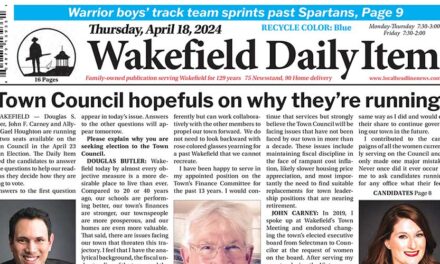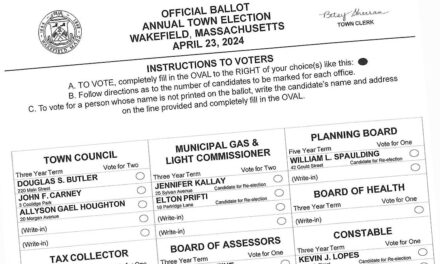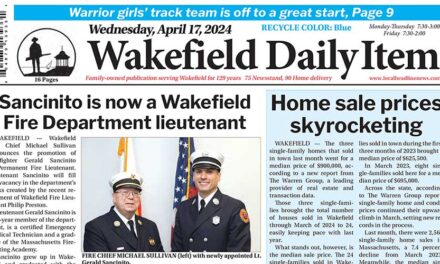Published in the December 30, 2015 edition.
By MARK SARDELLA
WAKEFIELD — The Lake Quannapowitt Water Quality Committee this week narrowed down the list of solutions to Lake Quannapowitt’s cyanobacteria problem to 26 possible options. The committee plans to vote in April on which options it will recommend to the Board of Selectmen.
At their meeting on Monday, the Lake Committee went down the list of the various options that the group had considered over the two years since they were tasked by the selectmen with studying how the water quality of the Lake could be improved. The committee has focused mainly on how to eliminate the blue-green algae, also known as cyanobacteria, from the Lake. The bacteria are responsible for turning the Lake waters to a green color during the summer and can pose some health risks.
The purpose of Monday’s exercise, it was stressed, was not to vote on the merits of each option, but to make sure that the committee agreed on the wording.
The committee first discussed the language used to describe the committee’s objectives. Members were OK with “Meet water quality standards for Class B water” and “Eliminate cyanobacteria from Lake,” although some members wanted to include the definition of “Class B Waters” as essentially suitable for fishing and swimming.
Moving on to “in Lake” solutions for controlling the cyanobacteria, members agreed on the definition of SolarBees as aeration and circulation devices.
They agreed to change the wording for the two “aluminum sulfate treatment” options, replacing “short-term” and “long-term” with “low-dose” and “high-dose.”
Committee members agreed with the language of each of the following options on the list: “copper sulfate treatment,” “algae control ultrasonic,” “aeration/bioaugmentation,” “dredging,” “Beemats,” “algae harvesting by other floculation/filtering,” “organic sediment layer removal,” “algaecide treatment” and “herbicide treatment.”
They agreed to eliminate the option to “alter Lake outlet to skim off water surface algae, consider past historical Lake level.”
There was considerable discussion related to an option listed as “Walker’s Brook and other Reading drain channels diversion to Lake Q./Flushing.” The wording was Chairman Michael Collins’ attempt to express a solution advocated by committee member Dennis Cloherty.
But Cloherty vehemently disagreed with the wording.
“It’s the opposite of what I’m suggesting,” Cloherty said. “I’m suggesting undiverting water that is now being diverted.”
Cloherty has advocated unblocking three streams from Reading that he says historically fed into the Lake before they were blocked off in the early part of the 20th century and diverted around the Lake. In order to allow those streams to once again flow into the Lake, he advocates restoring the Lake to its natural high water mark, which he maintains would be no more than 12-18 inches lower than it is at present. Doing this, Cloherty has argued, would turn over the Lake water at least 10 times a year and eliminate the algae problem.
But Collins argued that the Lake would have to be lowered by 4 to 5 feet to allow the streams to again flow into the Lake.
Cloherty said that his preferred wording for the option was “restore Lake Quannapowitt natural high water mark and unblock feeder streams.”
“Just put it on the list,” Cloherty asked. “You don’t have to vote for it.”
Eventually committee members agreed to Cloherty’s choice of wording of the option.
The committee agreed on the wording for 11 possible options listed under “land side control.” These are measures are designed mainly to reduce the amount of nutrients like phosphorus that drain into the Lake from the surrounding watershed area.
Those measures include: “fertilizers/runoff/nutrient control,” “watershed control/green infrastructure,” “DPW leaf collection,” “pit for leaves and brush, composting,” “street sweeping,” “catch basin cleaning,” “watershed storm water runoff phosphorus removal treatment systems,” “riparian shoreline treatment,” “reduce impervious cover,” “consolidate and treat drains,” “enhance infiltration” and “public education on phosphorus loading.”
When the time comes for committee members vote on their recommendations for each solution, their voting option will be: “Yes, to further pursue option”; “No, for no further consideration”; “O, for pursuing if cost effective” and “E, for potential emerging technology for future use.”
Collins indicated that the committee will likely meet once a month between now and April, at which point they will vote on their recommendations to the Board of Selectmen.




